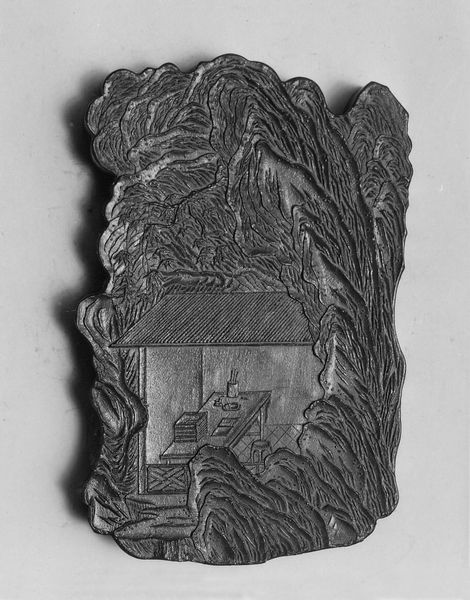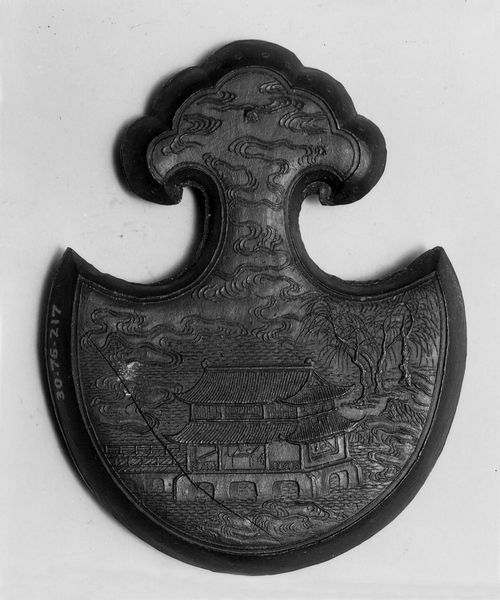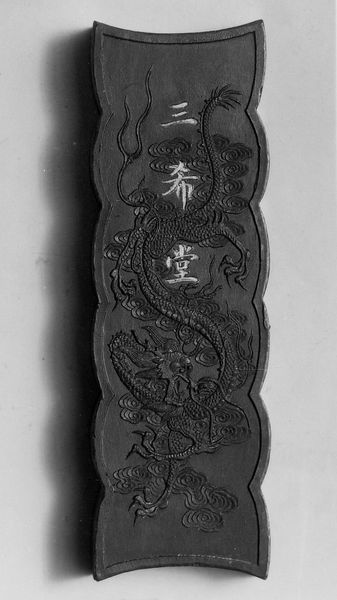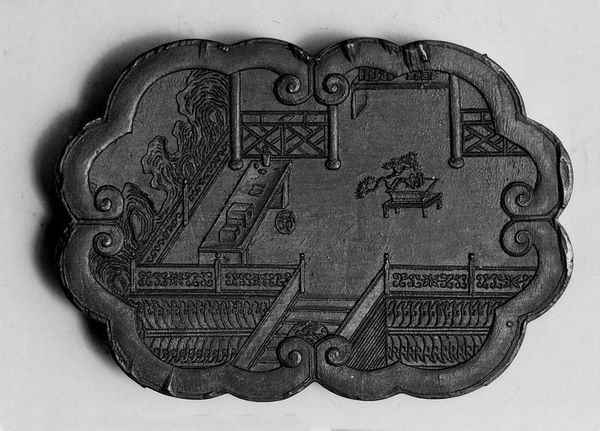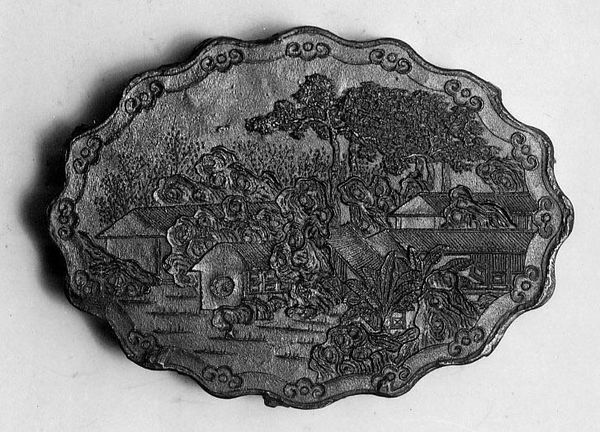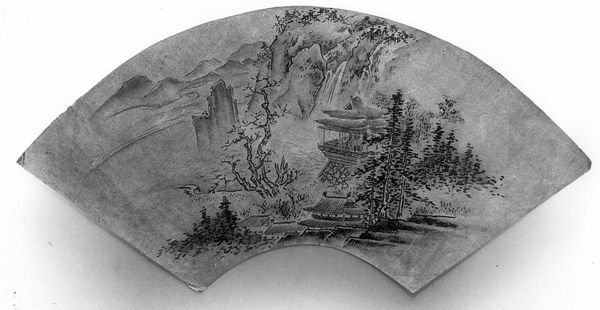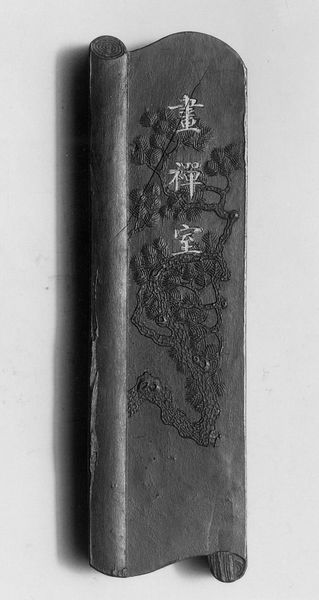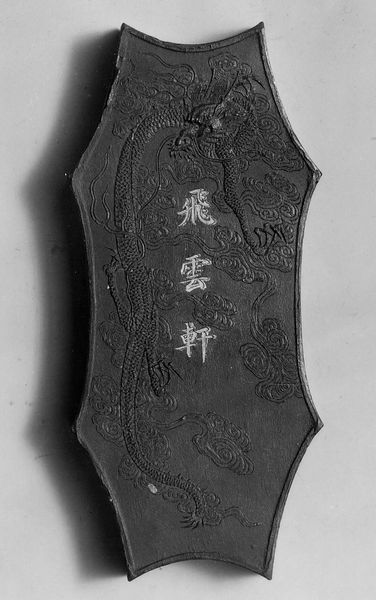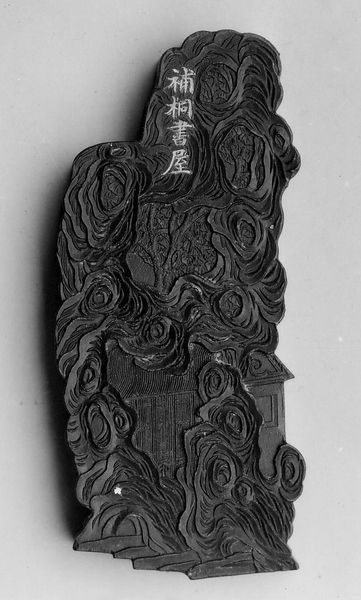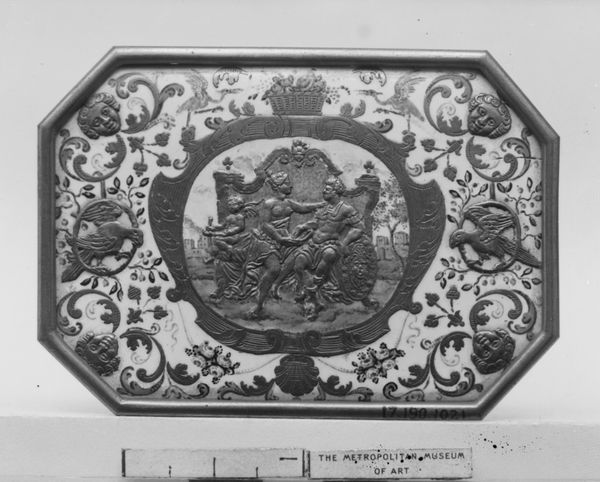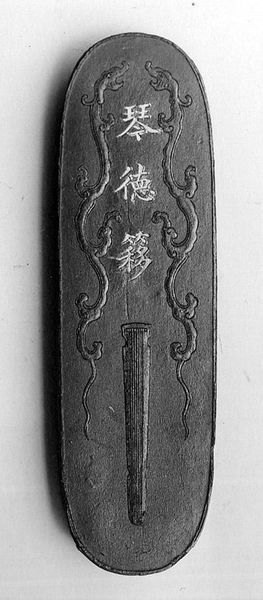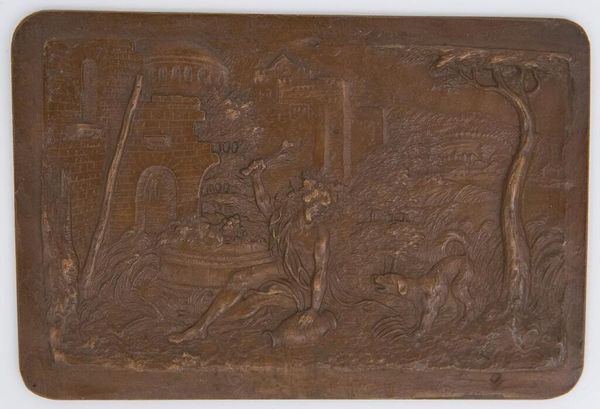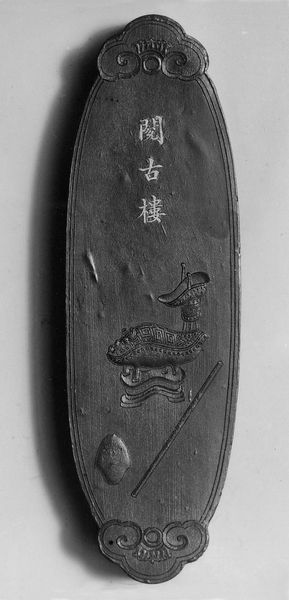
carving, relief, sculpture, wood
#
carving
#
sculpture
#
asian-art
#
relief
#
landscape
#
sculpture
#
wood
#
statue
Dimensions: H. 3 7/8 in. (9.8 cm); W. 2 in. (5.1 cm)
Copyright: Public Domain
Curator: Looking at this sculpture, “The Generous Virtue Study” by Jian Guzhai, carved sometime between 1871 and 1933, the material's deep, uniform tonality and low relief are quite striking. What do you make of its overall form? Editor: My first thought is…miniature stage set. The deeply carved landscape inside a stylized frame feels like a scene waiting for actors. The darkness also gives it an intensely serious and quite somber mood. Curator: The artist uses the wood’s grain and its susceptibility to fine carving to establish a powerful relationship between landscape and architecture. Observe how the precise geometries of the building complex at the base contrast the organic irregularity of the trees and mountains. The frame is quite deliberate, resembling ruyi sceptors in its form. The cloud collar above represents longevity. It invites us to see these dichotomies within the unifying artistic and cultural concepts of Chinese art. Editor: I see what you mean by dichotomy. But I keep getting snagged on how literally every single detail—from the roof tiles to the mountain crags—is intensely deliberate, meticulously rendered. No accident seems allowed, no room for error. And the absence of color magnifies this precision tenfold. It is almost like this carving serves as a very well crafted moral instruction. Curator: Exactly. This work can be contextualized within a lineage of scholar's objects or desk art, miniature worlds created for contemplation and ethical cultivation. Every form and symbol carries a loaded message to remind one of their conduct. It goes beyond a visual pleasure—it's about invoking certain philosophies through aesthetic encounter. Editor: In its compressed grandeur, the object almost becomes a portable monument, a moral touchstone meant to always provoke introspection and perhaps, action. But, at the same time, do you think something about the somber, perfectionistic approach it takes diminishes its overall potential? A virtue expressed is sometimes less impressive than virtue that’s lived. Curator: Perhaps. Yet its undeniable artistry transforms didactic intentions into complex, evocative experiences. And after all, the beauty of the object itself inspires reflection. Editor: Well, after seeing it up close and contemplating all those elements, I can agree there is something admirable in that ambition—striving for both aesthetic and ethical perfection. Curator: Indeed. And within this delicate balance resides the piece's lasting power.
Comments
No comments
Be the first to comment and join the conversation on the ultimate creative platform.
